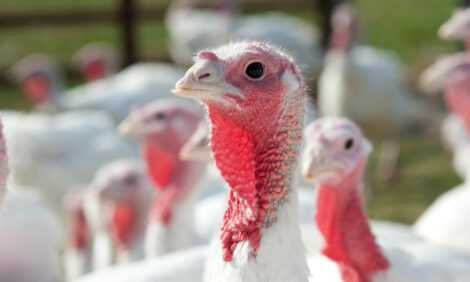



Avian Flu in the US: High-Path, Low-Path and its Link to Other Poultry Diseases
GLOBAL - The most dangerous characteristic of avian influenza is its ability to mutate quickly from a low-pathogenic disease of the respiratory tract to a high-pathogenic disease with mortality rates up to 100%, explained David Swayne, DVM, PhD, research veterinarian with the USDA.“Once these low-pathogenic strains enter a commercial poultry flock, the virus circulates throughout the flock and has the potential to mutate into the high-pathogenic H5 and H7 strains, which spread rapidly resulting in high mortality levels,” he told Poultry Health Today.
As early as 1987, low-pathogenic forms of avian influenza (AI) were identified in flocks of wild birds in the US that experienced very little infection or mortality.
Even though low-pathogenic strains of AI are not known for high mortality, co-infections with other respiratory diseases including infectious bronchitis and infectious bursal disease can increase production losses and mortality levels, the veterinarian said.
‘Doesn’t matter which’
“It doesn’t matter which infection is present first, any co-infection increases the severity of both diseases,” Swayne added.
In early 2015, highly pathogenic H5 strains of AI spread quickly between flocks and poultry farms across the US resulting in the destruction of approximately 48 million chickens and turkeys. Low-pathogenic AI was also reported in turkey flocks in Indiana in January 2016 and in Missouri in April 2016.
“The AI virus can be spread through various paths including clothing, vehicles, dust and windblown particles,” Swayne said. “The exact pathway of infection may never identified.”
Poultry producers quickly learned the importance of biosecurity during the 2015 outbreaks and began implementing strict protocols in an effort to help slow the spread of the disease.
Education key to detection
Education is the key to early detection of an AI infection. It is critical that everyone involved in poultry production — from the farm workers and veterinarians to the testing labs — is educated and trained to identify the signs of AI.
“The AI outbreak in Indiana [in early 2016] began in ducks and birds of prey as a low-pathogenic strain,” Swayne explained. “Once it entered the commercial operation, it began circulating and mutated into a highly pathogenic H7 strain.”
Increased surveillance on the part of poultry producers and veterinarians helped identify the 2016 Indiana outbreak before it became widespread, he added. The Missouri outbreak in late April was still being investigated at the time of this report.
Vaccination programs for AI remain a hot topic for poultry producers worldwide.
Swayne said because the US can’t live with highly pathogenic AI, the best solution for control is complete eradication of the disease or a “stamping-out” program involving humane euthanasia and ecologically sound disposal.
In other countries with poor infrastructure and limited diagnostic and testing programs, vaccination for AI is often the only viable option for poultry production.










